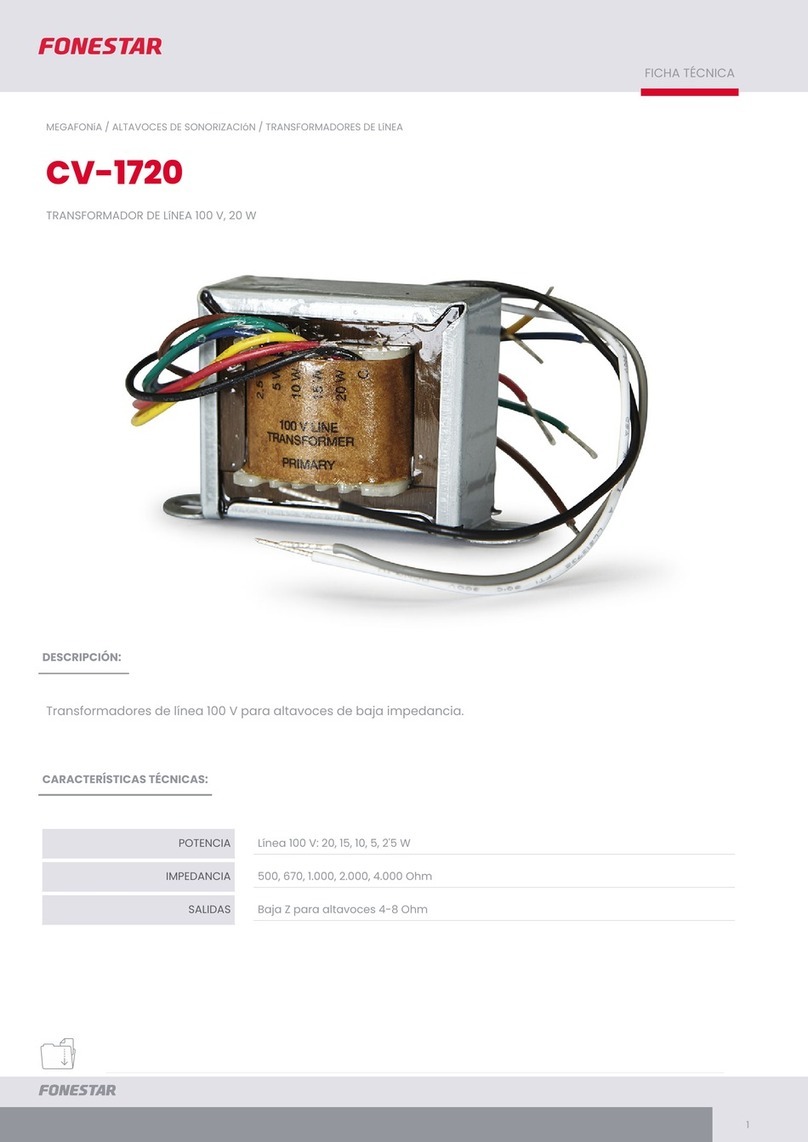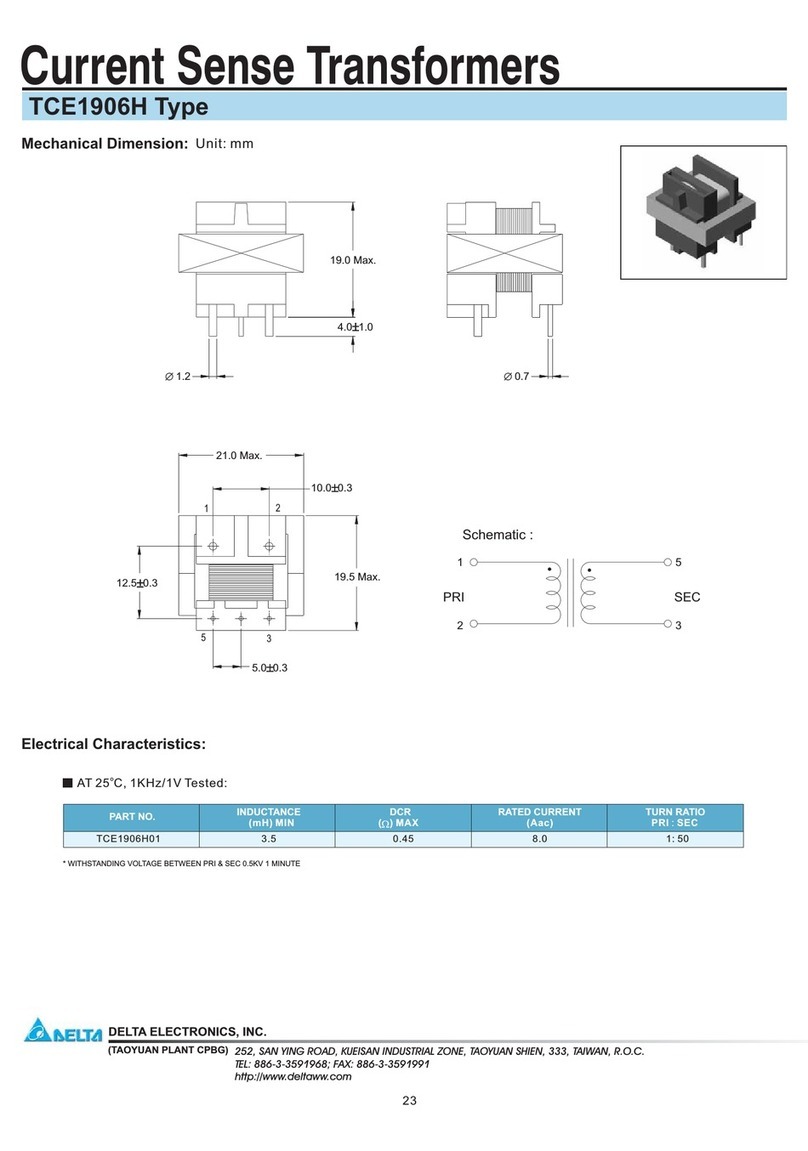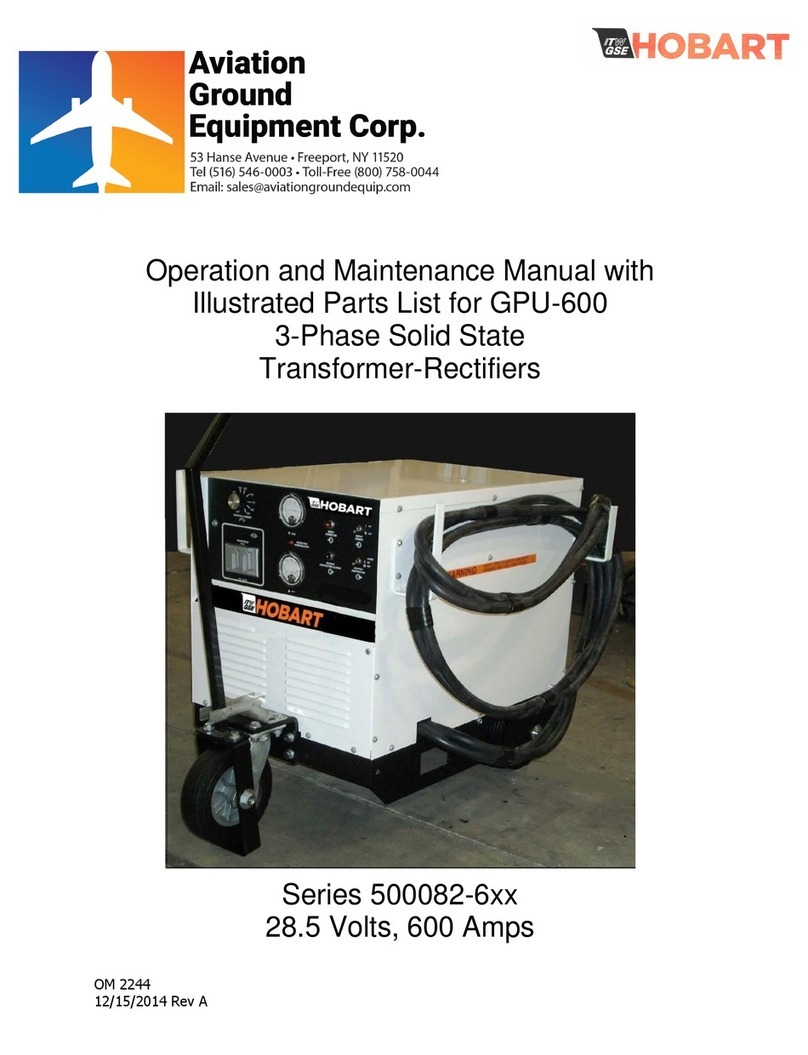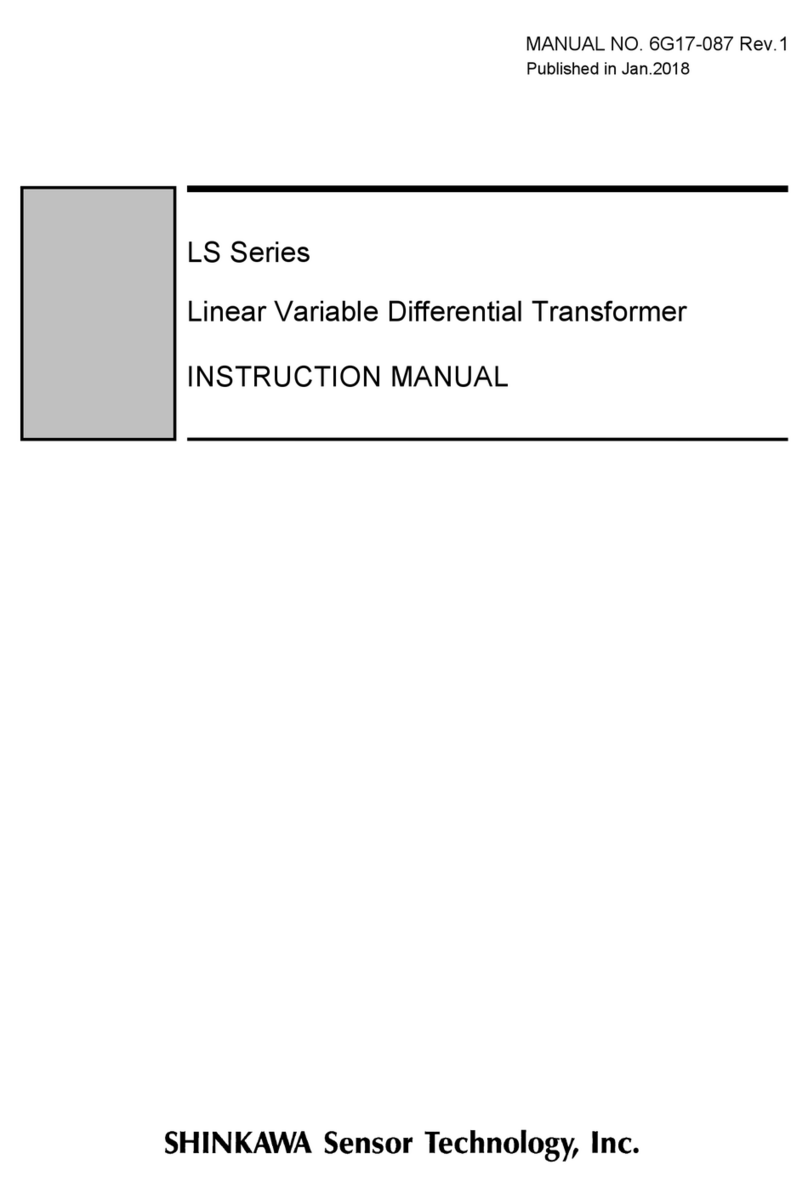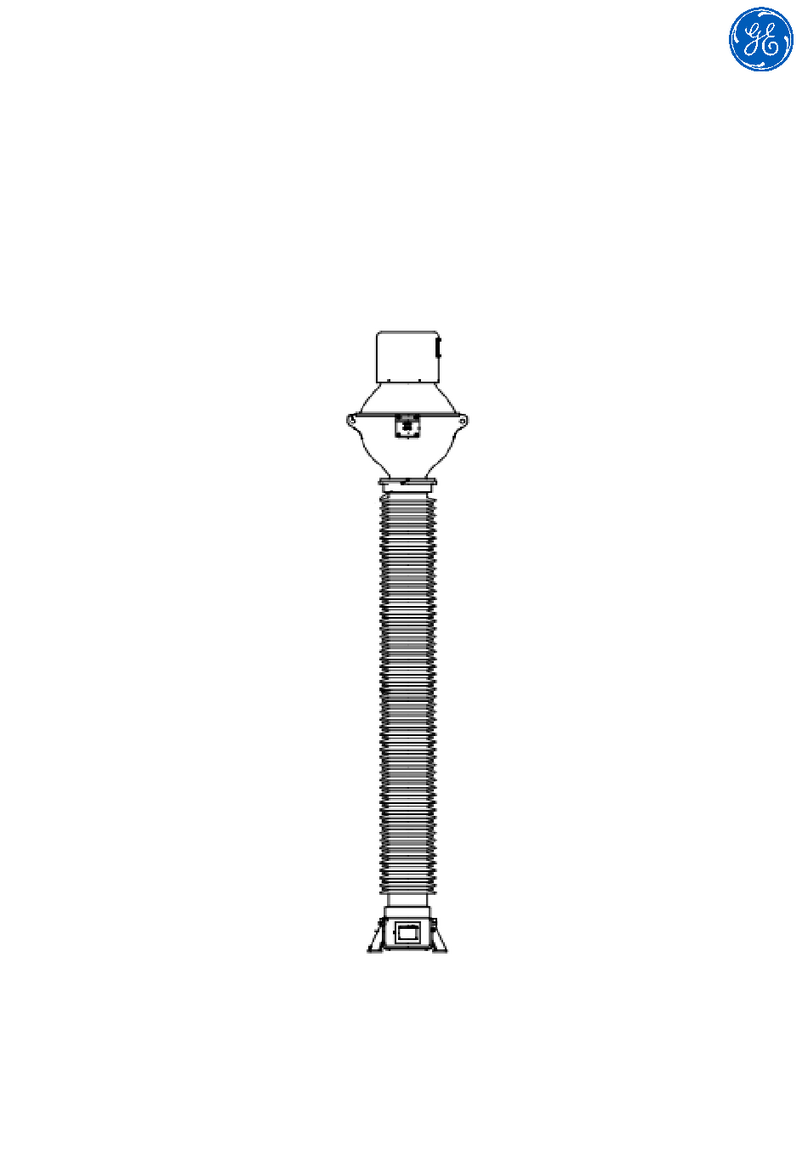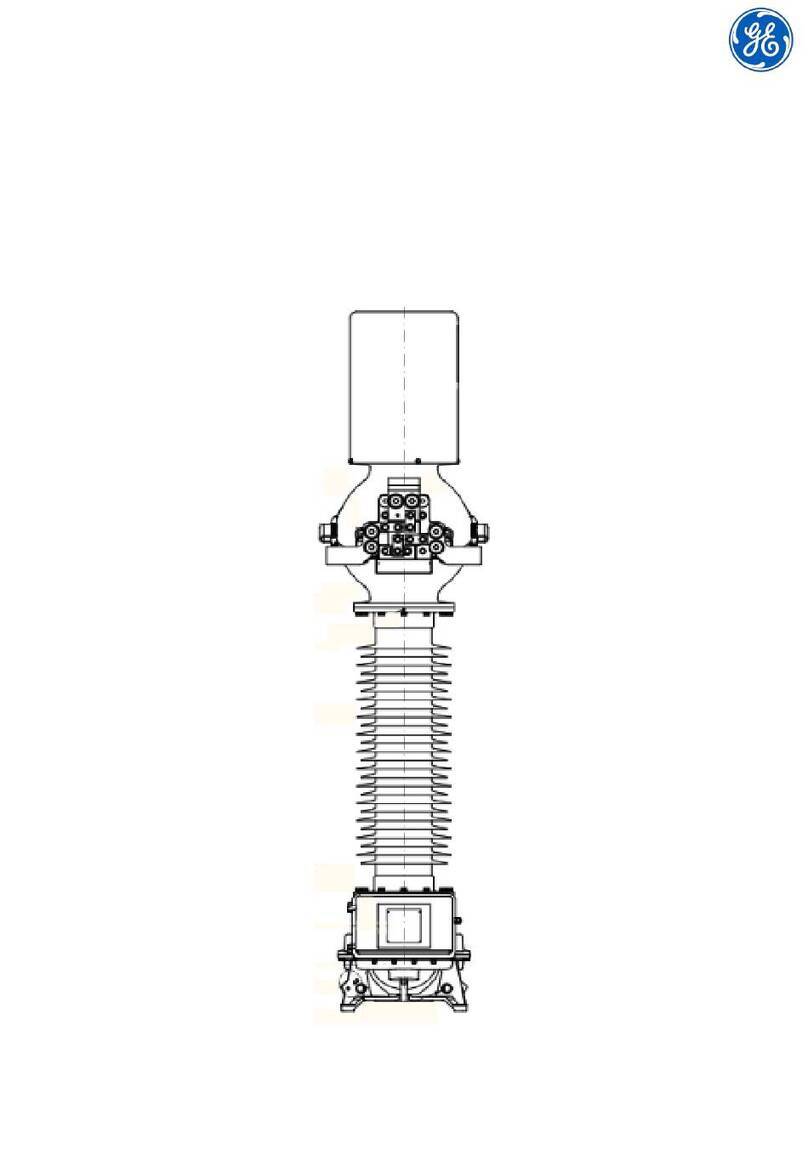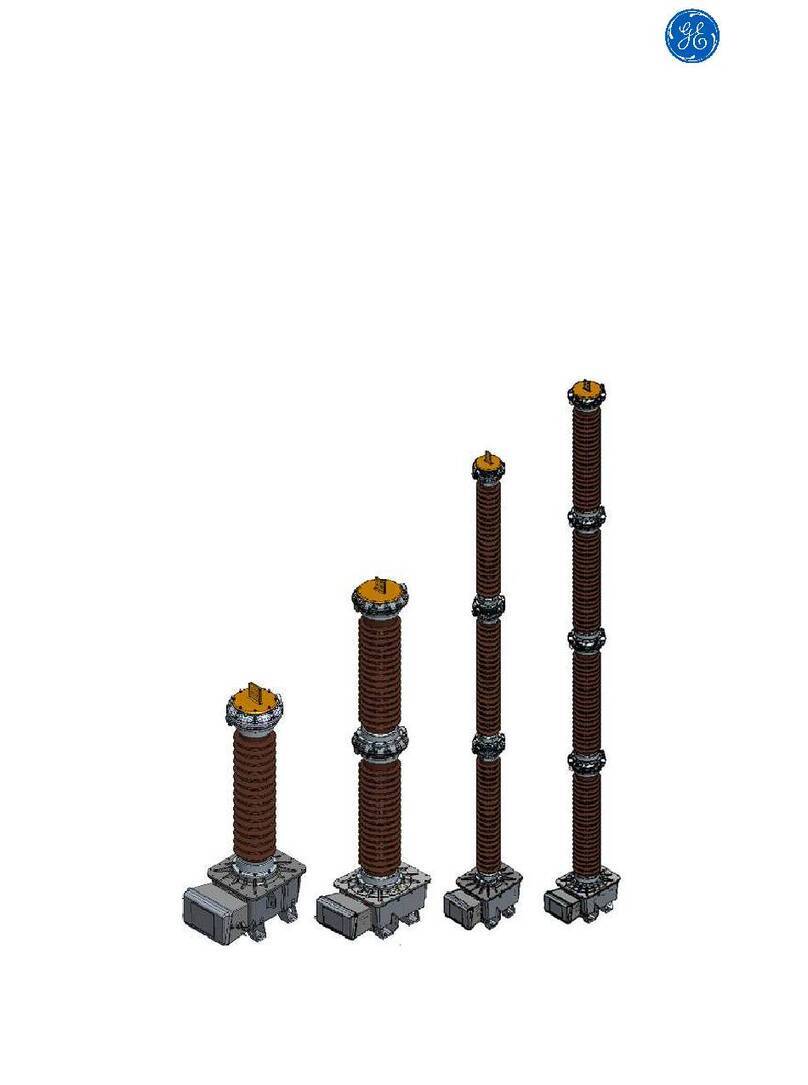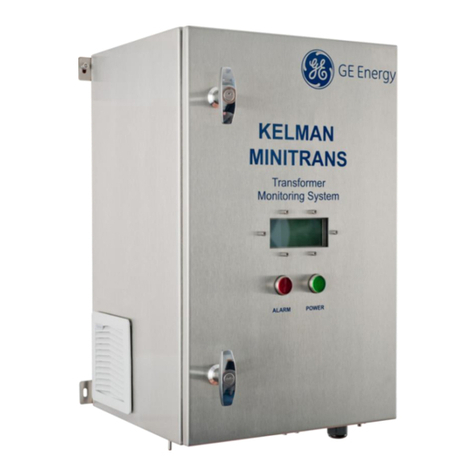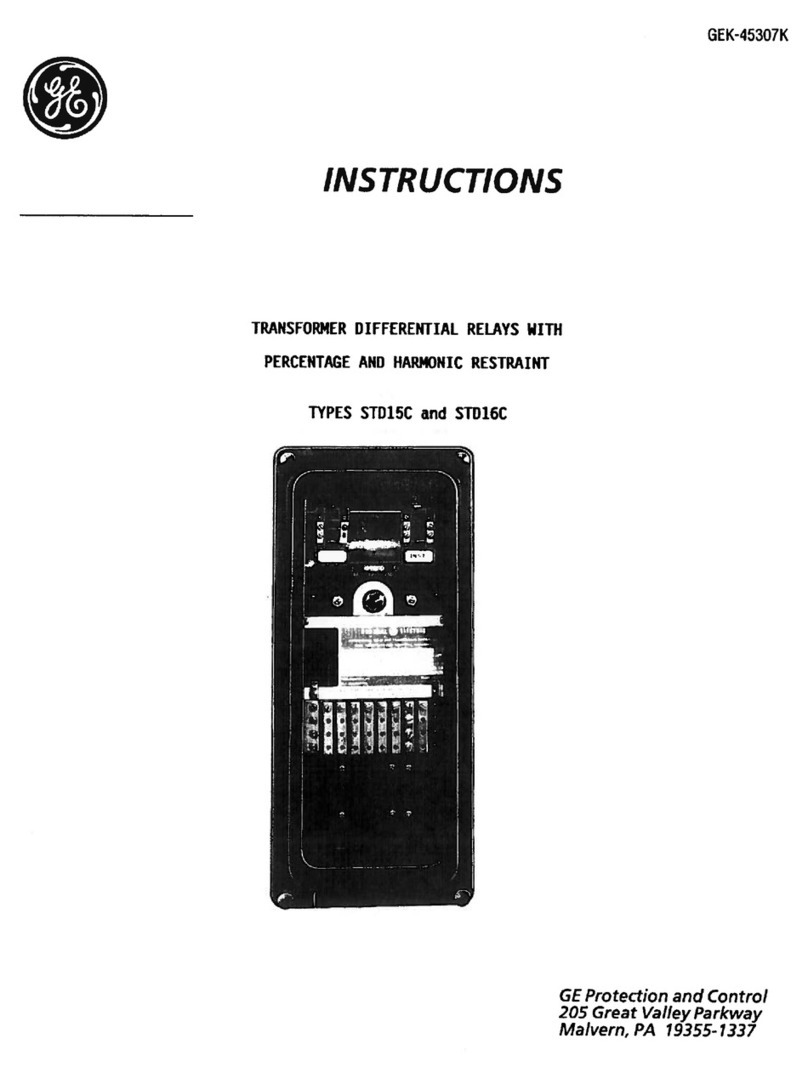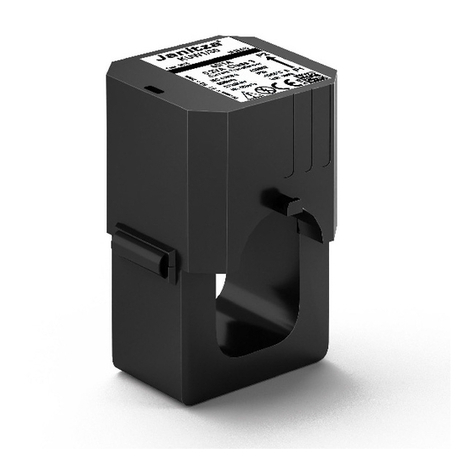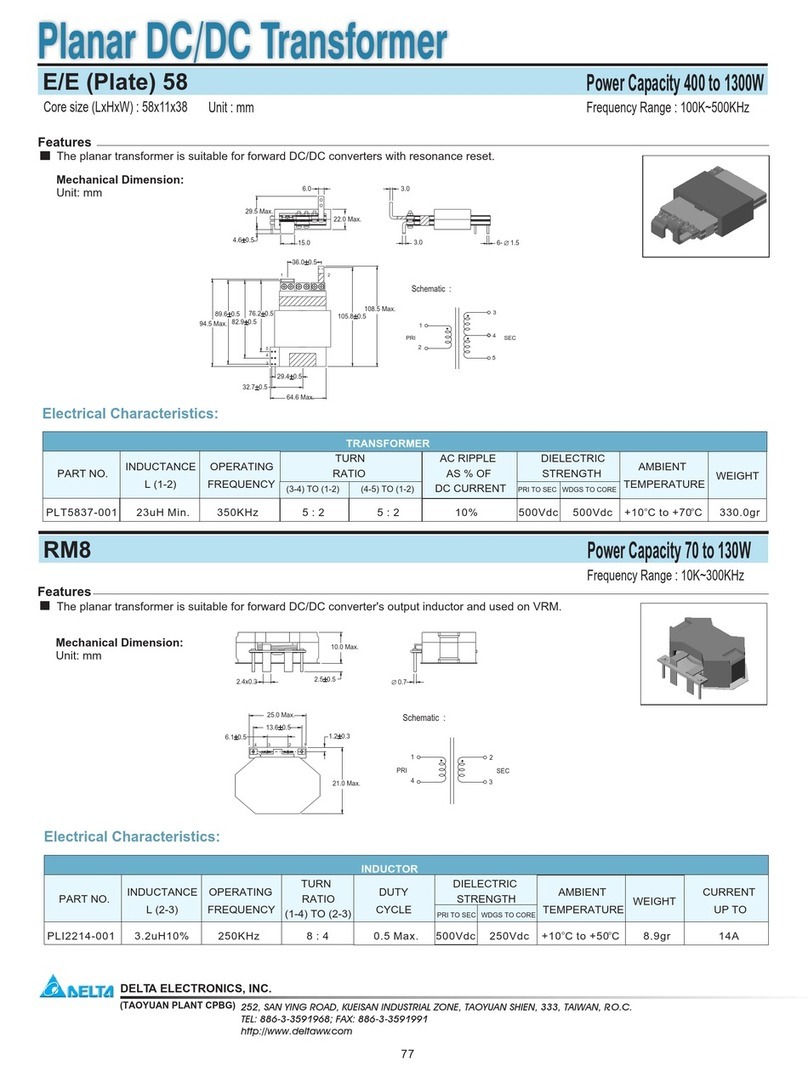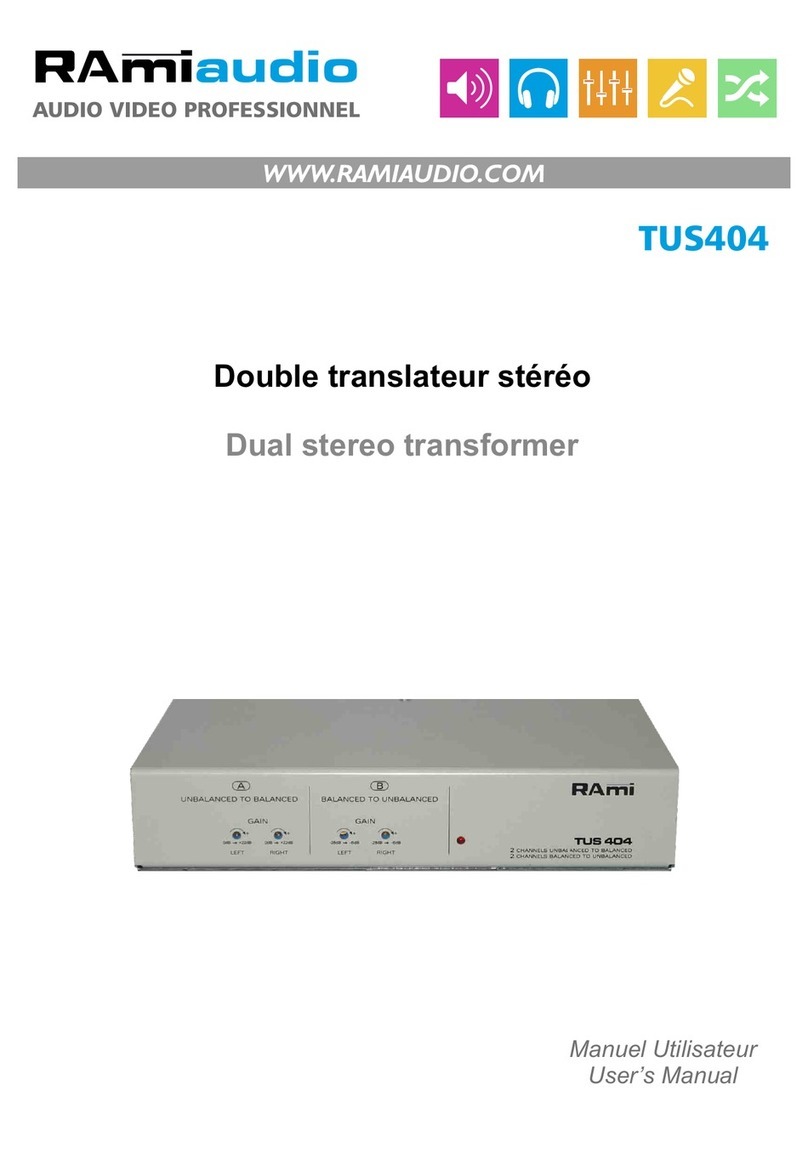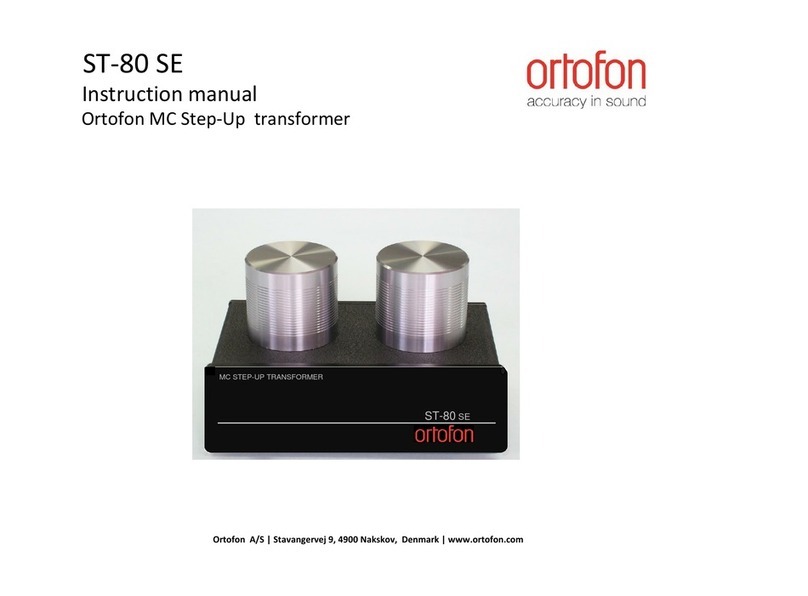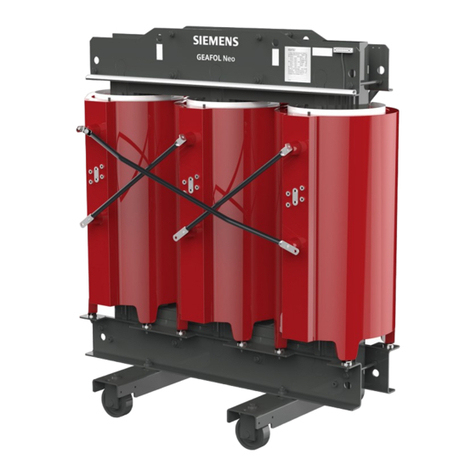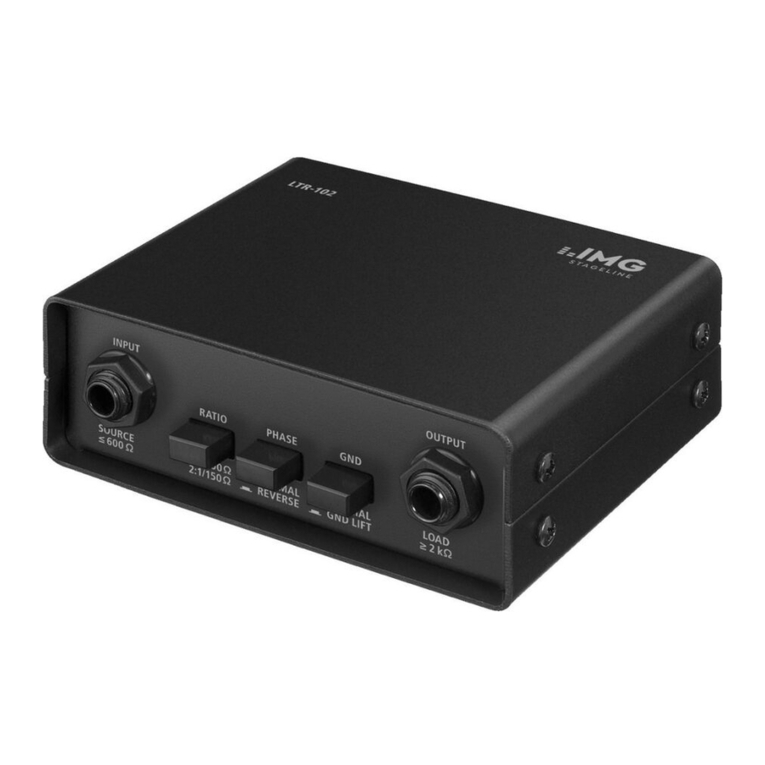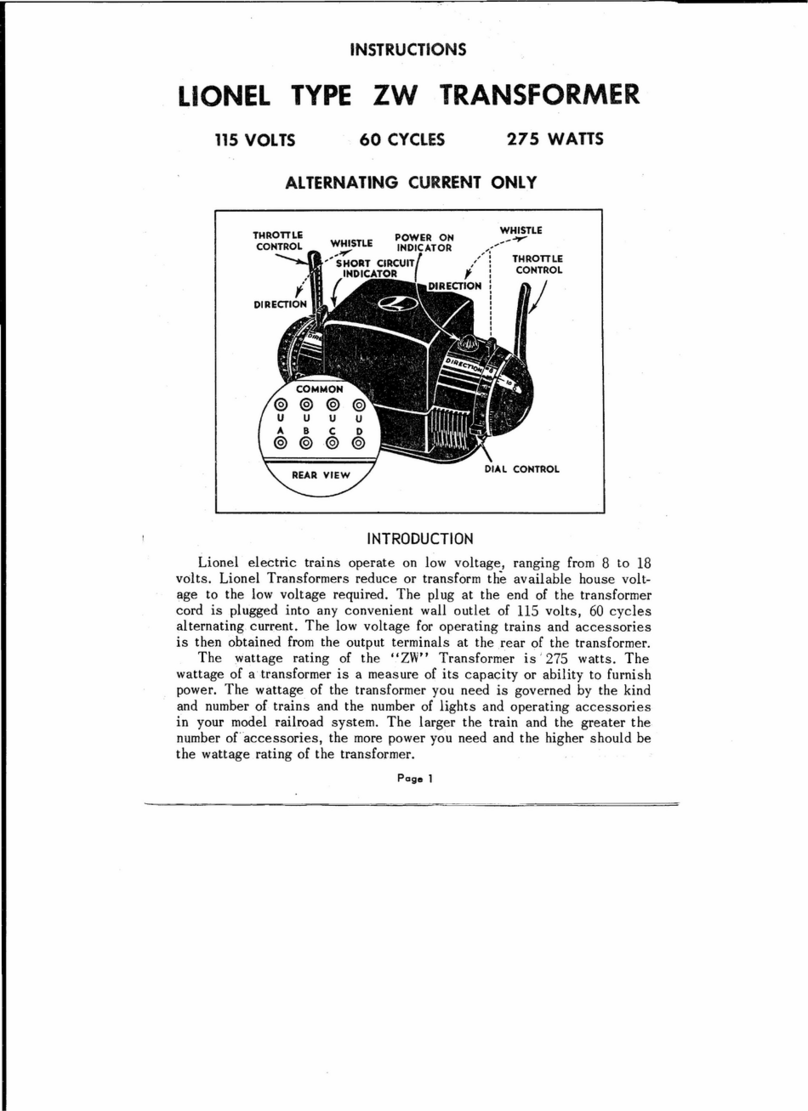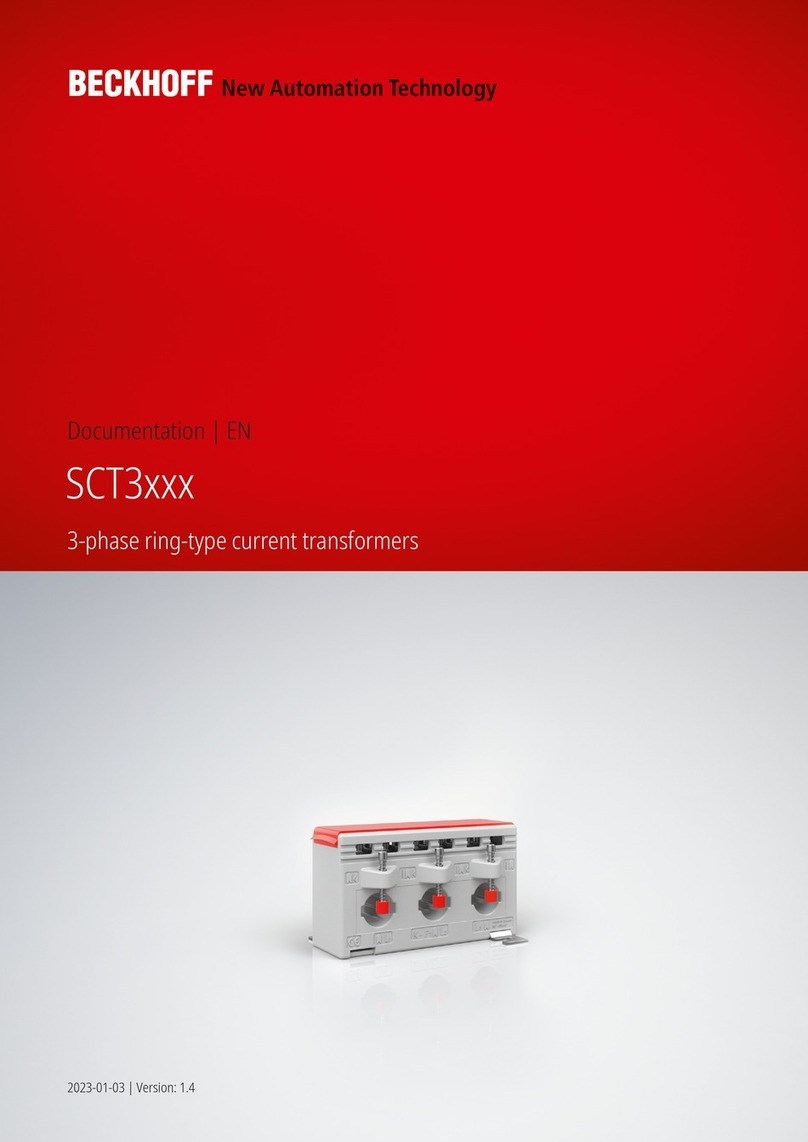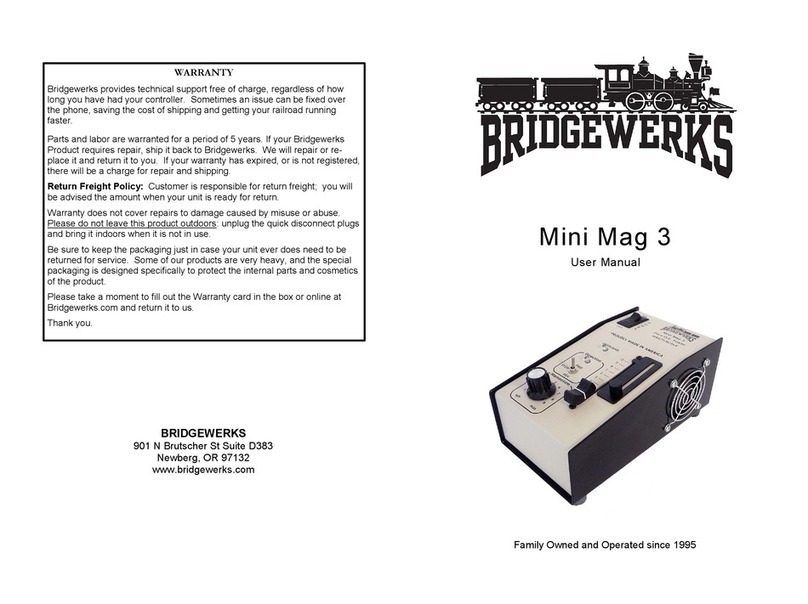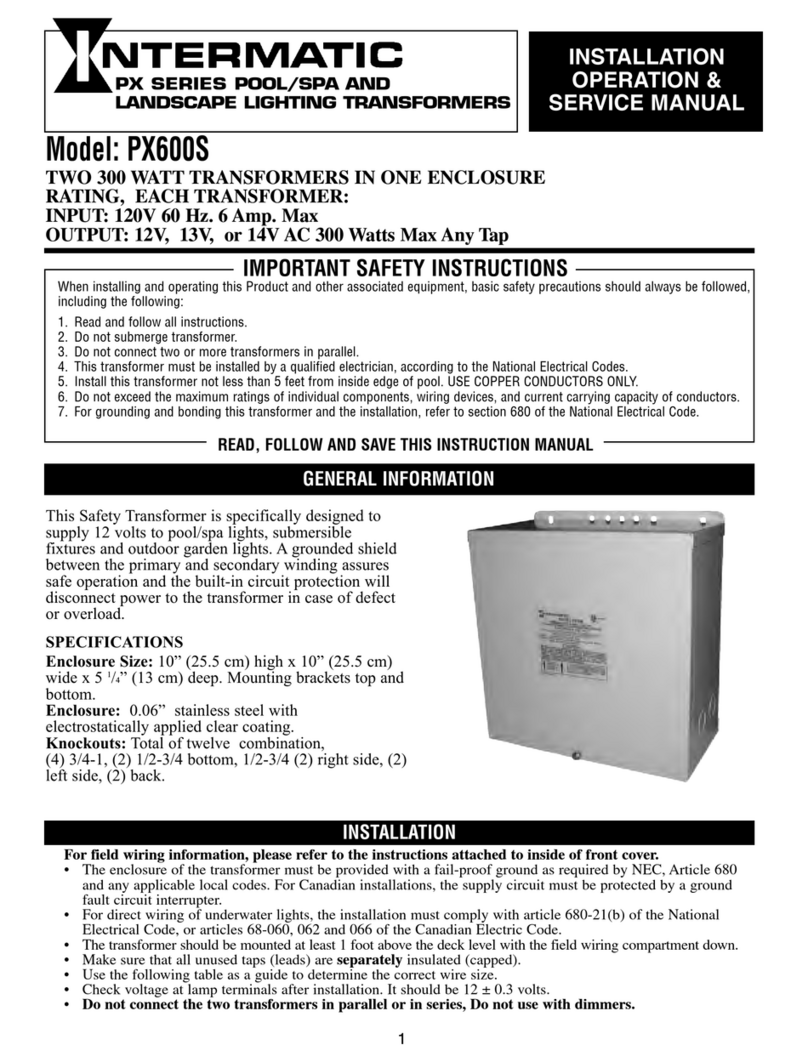
Instruction Manual
© GE Grid Solutions 6
2. DESIGN AND CONSTRUCTION
2.1. Inverted construction and
primary circuit for CT part
The active part of the CT current
transformer part is located above the
insulator. The advantages of this
construction concern the primary
circuit conception. The primary circuit is
short, rigid and straight, minimizing
heating. In addition, it bears
electrodynamics forces more easily,
allowing high level performance,
relating to electrodynamics and thermal
effects, in a presence of short-circuit
currents. The primary bar (simple or
multiple ratios) with magnetic circuits
are centered to assure a distributed
magnetic flow in uniform way to avoid
local saturation. This arrangement
allows also better accuracy in transient
conditions.
2.2. Secondary circuit for the CT part
The ring-shaped magnetic circuits are
manufactured either from very high
permeability grain oriented steel or
from nickel alloy. In order to achieve a
satisfactory transient behavior,
protection cores can also be provided
with gaps.
CT part of the KOTEF72 may have
metering and protection cores with
different loads and different accuracy
classes. Secondary turns are evenly
wound around the circumference of the
ring-shaped cores. Changing ratio is
available by means of taps on the
secondary or primary side.
All secondary windings are enclosed in
an aluminum box which protects them
against high frequency disturbances
while acting as a low voltage shielding
electrode. This aluminum box is
extended up to the base by an
aluminum tube which contains all
secondary leads. The cross section of
the earth connections is designed to
support defect currents.
The bottom of the hermetic and
watertight secondary terminal box is
closed by a fitted plate, with or without
cable gland depending on customer
requirements.
2.3. Paper-oil insulation
Insulation between primary and
secondary circuits is made by multiple
layers of insulating papers impregnated
with mineral oil.
To protect the oil from the environment,
the KOTEF72 head is closed by a
metallic bellows. Due to its wave shape
construction, the bellows adapts to the
changes in oil volume without
producing any increase or decrease in
internal pressure. This bellows resists
aging and corrosion.

